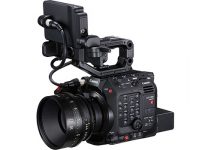Over the last few years, the rise of DIY culture and the cheap and readily available flood of electronics we’ve seen has brought, as a consequence, a lot of motion-controlled imagery. Simple setups that made for captivating shots and easy VFX tricks are more common than ever, and a lot of companies are resorting to this niche, presenting brand new rigs.
But, even with all these goods hitting the market, the search for a professional effective tool is always on. Or is it? Caleb Pike from DSLR Video Shooter is indeed one of our most trusted sources for in-depth reviews, and if he’s endorsing this particular camera slider, we can be sure there’s more to it than we can imagine. Let’s take a look!
There are more than a few riders in this rodeo, we’ve seen Moza’s peculiar Slypod, or the Shark Mini S1, great system but with little payload, we’ve even seen people using gimbals to do motion control, but there’s the obvious problem of the sliding part missing! So what does this Rhino Arc II have that others lack?
Let’s start with the looks. As you can see, the Rhino Arc II is basically a tripod head, but motorized. It has joysticks on board to control movement and a small discreet display to navigate the menu. Full app integration allows you to program keyframes and handle the system remotely. The cherry on top? It can even track your face!
There are various accessories available for the system, the most noticeable being the slider, that has a slider motor and a focus motor in case you go for the full rig system. If you combine all these pieces you have a full 4-axis motorized system remotely controlled.
The head communicates with the other accessories via ethernet cables and costs $1,400. On top of that, you should add $600 depending on the model you choose, and another $600 goes for the two motors ($250 for the slider motor and $350 for the focus motor).
Adding all the pieces together we hit a grand total of $2,600. That’s a lot for a slider, there’s no doubt about that, but there are few systems that can compete with this rig.
It’s extremely quiet and has a very slow minimum movement range. That may seem trivial, but anyone who has used a motorized slider or rig before knows how crucial can the noise level be. That low pitch whirring noise can distract any talent, even the most proficient.
Above all, the ease and tranquillity that comes from knowing you can program the movement hit a button and let it go, without worrying about taking that shot again are priceless. It’s such a time saver that it will probably be the most loved piece of gear by all of the production department.
But can all of this be enough to get you over the two thousand mark for a slider kit? It’s hard to say. It depends a lot on your production habits. If the amount of time saved is consistent then yes, it’s probably a great purchase.
But for the occasional dolly now and then, you’re better off if you invest in some other piece of gear. There’s one bit of information that you should keep in mind: Caleb vouches for it, and that should be more than enough!
[source: DSLR Video Shooter]
B&H Order Links:
Rhino Camera Gear Essentials Slider Bundle
Rhino Camera Gear Time-Lapse Slider Bundle
Disclaimer: As an Amazon Associate partner and participant in B&H and Adorama Affiliate programmes, we earn a small comission from each purchase made through the affiliate links listed above at no additional cost to you.


